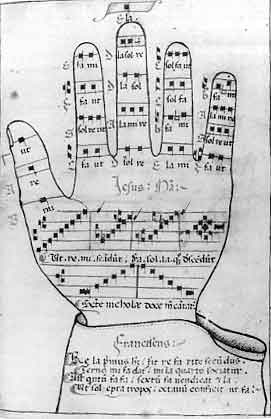|
When I first started teaching music, my students eyes used to glaze over as soon as I said certain key words like "quarter note" or "tempo". I realized this could be a big problem. How could I teach music without teaching music theory? As a music teacher, I wanted to instill in my students the fundamentals of music which I loved that could help them become better musicians and develop an overall appreciation for music. This article will give you some tips I've discovered over the years to teach music theory and tell you what worked for me for each grade level. How to Teach Music Theory to Preschool Students?I love associating new vocabulary words with rhythms using ta and ti-ti for preschoolers. They love looking at the pictures and shouting out the words. When preschoolers don't know a word, it's a great teaching moment for you. They pick up the rhythms just as easily as they learn new vocabulary. At this stage of a child's development, language development is very high. Why not naturally start embedding these ideas of rhythm in their minds? You can also teach them music dynamic, music instrument families, and all sorts of other things using the PowerPoints. I've made some of my PowerPoints downloadable for you to use in your own class. (Music Powerpoints Link) Teaching Kindergarten Through 2nd Graders Music TheoryKindergarten through second graders are very active. They love to learn through doing. That's why performing a rhythm using body percussion, ORFF instruments, or rhythm clap alongs are all excellent choices. I still may use the PowerPoints for early grades, but eventually fade them out. I like to do music centers and let students mold the notes and rests out of clay. There are a lot of music theory games which you can read about in my article Rhythm Music Center Activities for Elementary Students. Keep explanations to students at this age brief and do activities that help them internalize the theory concepts you are teaching. You can start to give them ear training activities, but keep the activities to about five minutes. One ear training activity is to use those toy bells you have laying around your classroom to have students take turns picking the bell that you sang using solfege. For instance, if you sing "Do-Re-Mi," they would raise their hand and pick the C, D, and E bells. Music Theory Activities for 3rd through 5th GradersThird through fifth graders are social and start to look at the world a little differently. They may not find bouncing around as fun as they use to. That's why I love teaching music theory with my color-by-note music workbooks. You can do one page per week. The activity takes about ten minutes and you can turn on some nice music by a composer you are teaching them or their favorite concert song while they are coloring. I also like to teach music theory while I'm teaching them their concert repertoire. Take the musical ideas that go along with the song and use them as a lesson. What was the shape of the melody they sang? Was the ending piano or forte? Who can write the rhythm of the line they just sang on the board? These are all questions that will get students thinking about the music as they are making music. It also tightens up the performance. Teaching Theory to Upper School (Middle and High School Students)Teaching music theory within a song is a technique that should carry over into even adult music students. Upper school music students want to know that what they are learning is relevant, so teaching music theory separately may get some backlash from a few outspoken middle school students. But their are still fun ways to teach music theory as a lesson in itself. Music games like "Poison Rhythm" where students can't clap a certain rhythm or they are out, are still really fun for upper school music classes. Use sixteenth note and rest combinations or syncopated rhythms to bring it up to their level. Students at this age like music worksheets. They seem older, but music class is their specials class and they still want to have fun. You can play a music theory game or do a music Quizlet. Then reward them with a teen themed water bottle sticker.
I hope these suggestions help you teach music theory in your class. Have fun teaching music!
0 Comments
Leave a Reply. |
�
Angela BondMusic Teacher/ Musician/ Owner of Plum Rose Publishing Categories |
We improve our products and advertising by using Microsoft Clarity to see how you use our website. By using our site, you agree that we and Microsoft can collect and use this data. Our privacy statement <link> has more details.
We Use PayPal: PayPal accepts Debit or Credit Card
Price pls tax and shipping and handling
We Use PayPal: PayPal accepts Debit or Credit Card
Price pls tax and shipping and handling
company id 100







